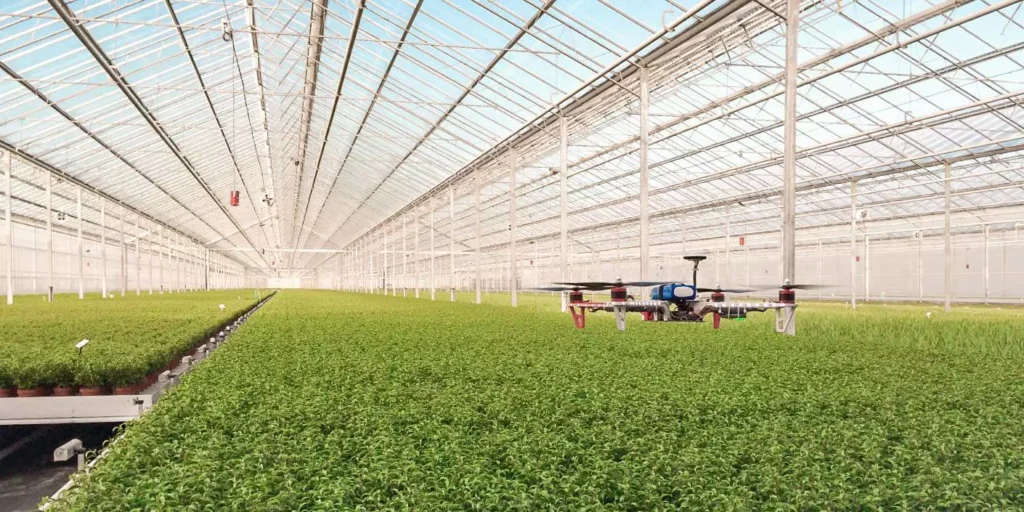Food & Climate
The scientists analyzed lettuce cultivated in indoor agriculture facilities, by using AI techniques like deep reinforcement learning and computational optimization, within eight diverse locales, and found energy use dropped 32.4 percent, which can help in plant factories.
Lettuce cultivated in indoor agriculture facilities consumed 6.42 kilowatt hours per kilogram fresh weight from 9.5 kilowatt hours per kilogram fresh weight, in places that use non-AI technology.
New research seen by “Food & Climate” platform, said: “Integrating artificial intelligence into today’s environmental control systems could reduce energy consumption for indoor agriculture or plant factories, potentially helping to feed the world as its population rises”, US Cornell University engineers have found.
The research scientists, which published in “Nature Food”, analyzed lettuce cultivated in indoor agriculture facilities within eight diverse locales — Los Angeles, Chicago, Miami, Seattle, Milwaukee, Phoenix, Fargo, North Dakota and Ithaca, New York throughout the U.S. — as well as Reykjavík, Iceland and Dubai, United Arab Emirates.
Warmer areas
The researchers found that for warmer areas, such as Dubai or the southern U.S., AI reduced energy usage to 7.26 kilowatt hours per kilogram fresh weight, down from 10.5 kilowatt hours per kilogram fresh weight, which is equivalent to a 30.9 percent decrease.
Low ventilation during light periods (16 hours of simulated sunlight) and high ventilation during dark periods (eight hours that simulate night) provided an energy-efficient solution for optimal indoor carbon dioxide levels for photosynthesis, oxygen for respiration and plant growth, and balanced other ventilation requirements.
“This is a very similar concept to smart homes,” said Fengqi You, professor in energy systems engineering at Cornell.
He added: “We want to be comfortable at home while reducing energy use; so, do crops. This work focuses on a smart system to make food production optimal, sustainable and lower the carbon footprint. That’s what AI does very well. We can save quite a bit if we use AI to optimize the artificial lighting and other energy systems carefully”.
The world population is expected to grow to 9.7 billion people by 2050, according to the United Nations.
This growth, combined with climate change and urbanization, requires fixes for the flaws in the world’s current food production systems, the researchers said.
And indoor farming methods, such as plant factories with artificial lighting, are less vulnerable to climate change, but they’re energy intensive and require careful resource management to be sustainable.
“Existing environmental control systems are not smart enough,” said You.
Financial support for this research was provided by the U.S. Department of Agriculture (National Institute of Food and Agriculture); the Natural Sciences and Engineering Research Council of Canada; and the Eric and Wendy Schmidt AI in Science Postdoctoral Fellowship (Cornell).
Solar energy
Chinese “School of Energy Science and Engineering” and “Harbin Institute of Technology”’ research, which published in December, found supporting results.
They said that solar energy, as an abundant and environmentally friendly source of renewable energy, has garnered global attention Nowadays, there is a growing range of applications for solar energy, including solar thermal storage, solar power generation solar heating, solar thermochemistry, solar atmospheric science, etc.
Human’s production life, as well as the growth of plants and animals rely heavily on solar energy. Without sunlight, plants can’t carry out photosynthesis. However, less than fifty percent of solar energy reaches the Earth’s surface, resulting in a low utilization rate of sunlight for plant photosynthesis.
Ineffective energy utilization is also a key obstacle to the development of plant factories. Lighting in artificial light plant factories accounts for around 80 percent of total energy consumption, encompassing the light source, air conditioning, and nutrient circulation systems.
Thus, increasing the energy utilization of artificial light sources can significantly increases crop yield and reduces costs.

Plant factory can enable continuous annual crop production through high-precision environmental control in the facility and fewer constraints imposed by natural conditions.
It represents the advanced stage of facility horticulture development.
Traditional agriculture is highly affected by the natural environment and various types of extreme environments.
However, Plant factory is completely controlled by humans and not disturbed by the natural environment. Plant factory can not only enable comprehensive coverage of traditional agriculture, but also be applied to all kinds of extreme environments: deserts, extremely cold areas, and outer space (space station, moon base).
It breaks traditional farming form, completely by artificial intervention, realizing the efficient use of time and space, and the yield can be tens of times increased, according to “Science Direct”.

